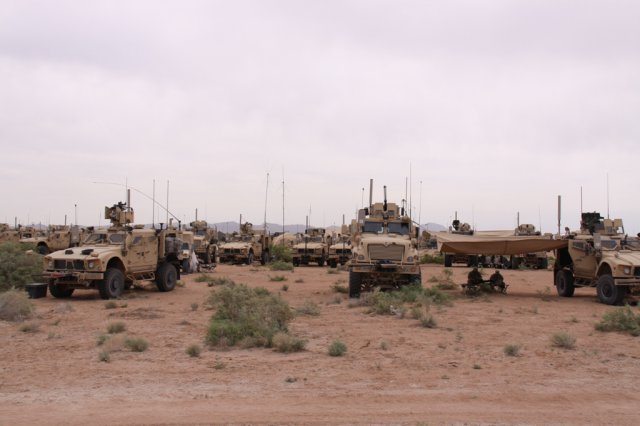The Army’s strategy for enhancing its tactical communications network through large-scale, Soldier-driven evaluations conducted every six months has reached a critical milestone as the service moves toward fielding the network to deploying brigade combat teams.
The five-week Network Integration Evaluation, or NIE, 12.2 in May and June served to validate and finalize the makeup of Capability Set, or CS, 13, the Army’s first package of network components, associated equipment and software providing integrated connectivity from the static Tactical Operations Center, or TOC, to the commander on-the-move to the dismounted Soldier.
The CS 13 network, Army officials say, will give U.S. forces a significant advantage over adversaries by enhancing situational awareness, improving maneuverability, speeding decision cycles and connecting Soldiers at the lowest level with one another and their higher headquarters.
“This allows us to have a greater communications capability at every echelon — from individual Soldier to the battalion to the brigade combat team,” said Col. Dan Hughes, Army director of System of Systems Integration. “They have communications that we never envisioned 10 years ago.”
With three NIEs now accomplished, the Army has established an integrated network baseline that will serve as the foundation for additional capabilities to be added as technology progresses. The NIE has also put in place a systematic, Soldier-driven approach to assessing network capabilities and determining their implications across doctrine, organization, training, materiel, leadership, personnel and facilities, known as DOTMLPF.
“When you bring those two things together, we’re really starting to see the maturity of the NIE,” said Brig. Gen. John Morrison, director of the Army G-3/5/7 LandWarNet-Battle Command Directorate. “This NIE really turns the corner to where we start taking it to the next level.”
Insights gained during the NIE in areas such as training and tactics, techniques and procedures, known as TTPs, will be essential as the Army begins to field Capability Set 13 in October, Morrison said. Equipping the 2nd Brigade, 1st Armored Division — the unit that executes the semi-annual NIEs at Fort Bliss, Texas, and White Sands Missile Range, N.M — with CS 13 also prepared the Army to integrate, train and field the equipment to deploying brigades.
“The NIE construct is doing what we want it to do,” Morrison said. “I can’t emphasize enough bringing the Soldier into the process early, because it’s allowed us to shape decisions the Army is making. And now as we get to field the capability set, we’ve got TTPS that are already being established, we’ve got smart, informed decisions because we ran the equipment through operational paces. All the lessons-learned with actually fielding to a unit have been learned, and we are well postured heading into the fall to field this capability.”
NIE 12.2 was the largest NIE accomplished to date and was the first full brigade-level validation of CS 13 network architecture conducted in a hybrid threat environment. NIE 12.2 also accomplished three program tests for record and evaluated 35 government and industry Systems Under Evaluation, or SUE.
The NIE completed the Warfighter Information Network-Tactical, or WIN-T, Increment 2 Initial Operational Test and Evaluation, or IOT&E, and marked significant vehicle integration across the brigade combat team, or BCT, with more than 350 vehicles integrated with CS 13 baseline systems, including Infantry BCT, Stryker BCT and Armored BCT platforms.
While official results from NIE 12.2 will be released in the coming weeks, the Army is already applying emerging insights from the exercise to make any necessary tweaks to CS 13, Morrison said.
In parallel to the CS 13 fielding effort, the Army has also begun risk reduction activities in laboratories at Aberdeen Proving Ground, Md., in preparation for NIE 13.1 this fall. By replicating the NIE network in the lab environment, engineers can resolve integration issues before systems get to the field — reducing test costs and allowing Soldiers to focus on the fight instead of the technology behind it. The lab activity also benefits industry by allowing companies to plug their systems into the holistic Army network and discover any interoperability challenges before Soldiers encounter them during NIE.
Industry interest in the NIE continues to grow, with 43 companies seeking to participate in NIE 12.1, 105 companies seeking to participate in NIE 12.2 and 146 companies seeking to participate in NIE 13.1 this fall.
Evaluating multiple industry solutions to capability gaps will allow the Army to obtain emerging technologies at a lower cost — a more efficient approach to acquisition as the Army aims to balance budget cuts with critical modernization needs. To date, the NIEs also have yielded more than $6 billion in cost savings and cost avoidance from the restructure of Army programs and the consolidation of test practices.
“We’re getting more effective and we’re getting more efficient,” Morrison said.










